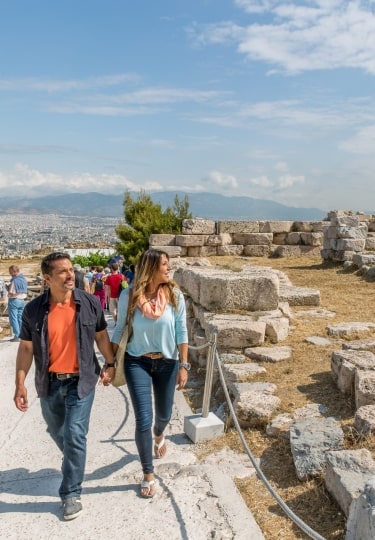For those captivated by typical thoughts of sea and sunshine, Greece in winter can come as a pleasant surprise. It’s true that temperatures can get quite low here, especially between the New Year and the first spring flowers, but that only adds to the allure.
It’s much easier to get around for one thing—with neither the energy-sapping heat, nor the crowds of high-season to contend with. Those colder, shorter days also open up a whole different side to Greece: one of roaring fires, hearty meals, smoky coffees, and a surprising array of things to do.
From hiking to exploring near-empty archaeological sites, here are just a few reasons to visit Greece in the winter.
Mild Winter Weather
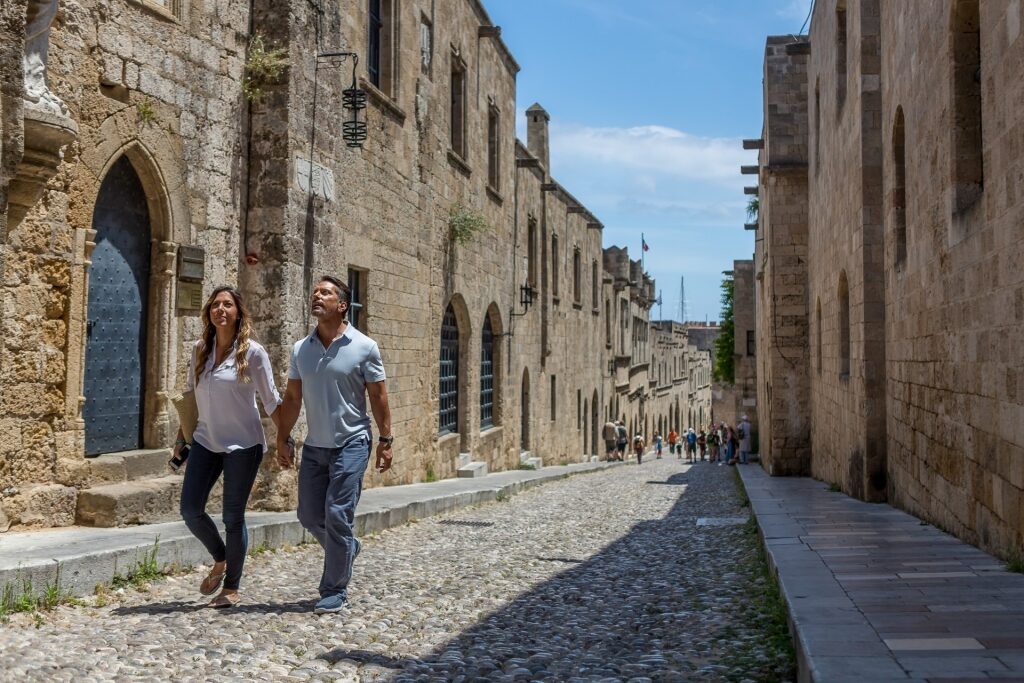
Old Town Rhodes
For those who associate Greece with its typically hot summers, winter can come as a surprise. While Greece in winter seldom gets truly cold, with the odd exception at the top of a mountain, it is certainly much cooler in the heart of winter than at other times of year.
Rains do come on occasion, but seldom for too long and, while the temperatures can fall, there are still many days where the skies are blue and the sun shines to take the edge off the chill of winter winds.
Southern Greece, the Peloponnese, and the main islands such as Crete and Rhodes tend to get the best of Greece’s winter weather, with daytime temperatures ranging between 50°F and 70°F, although it can be much cooler in the evenings.
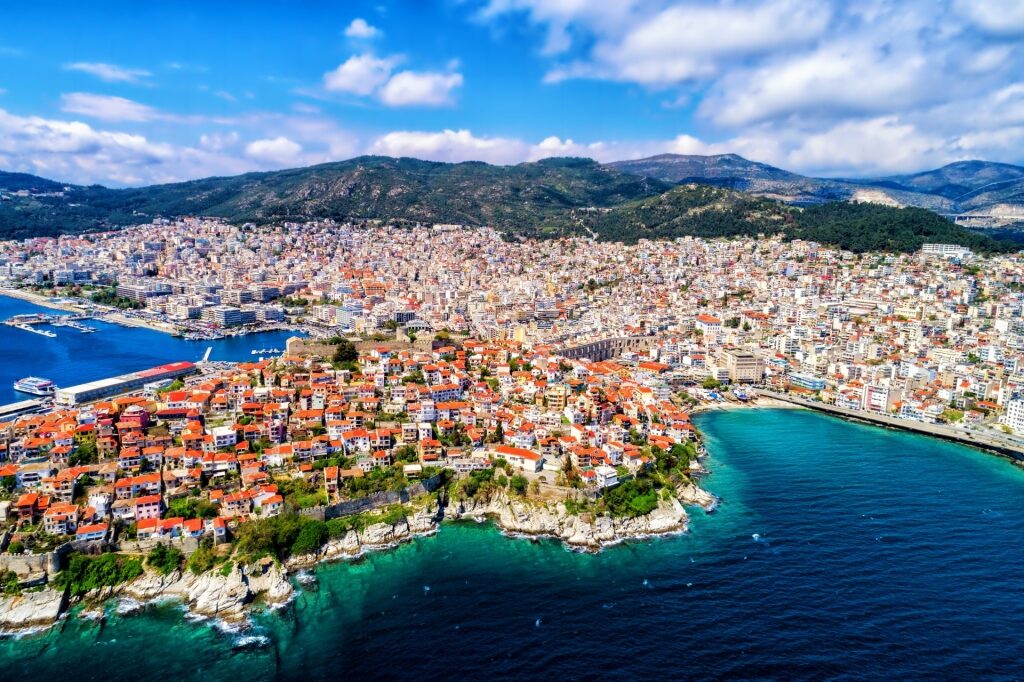
Kavala
The further north you travel, the colder it tends to be. In cities such as Thessaloniki and Kavala, expect temperatures to be around 10 degrees cooler than down south, while rain is more frequent here, too.
Greece is a surprisingly mountainous country and on the various peaks, snow is not unusual. The key to dressing in Greece is layers, and remember the old adage: there’s no such thing as bad weather, only poor clothing choices.
Ancient Ruins, Without the Crowds
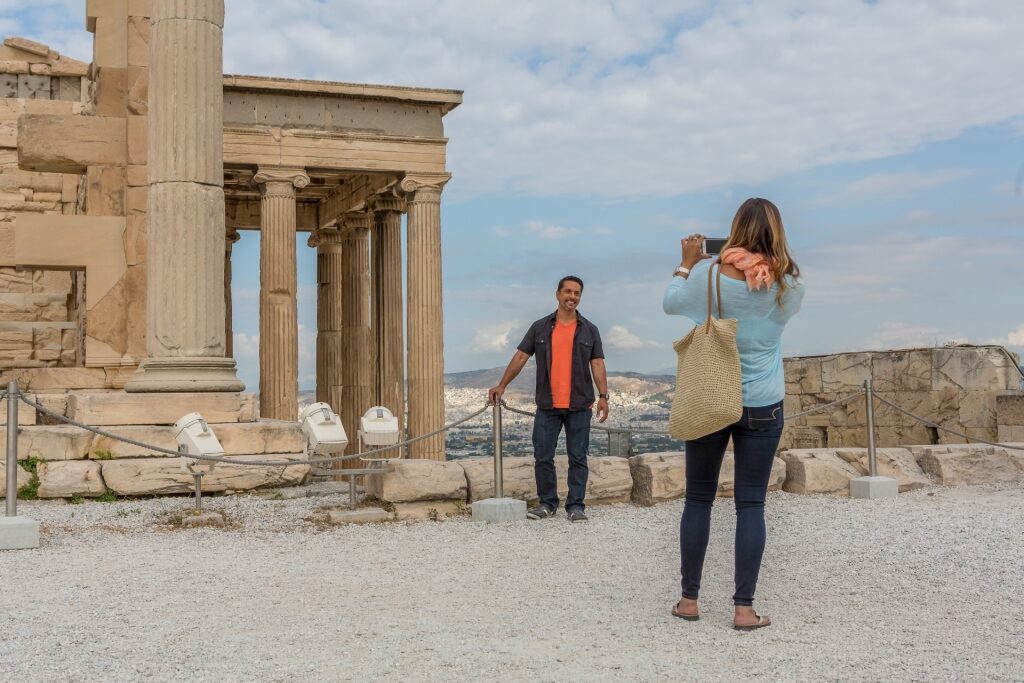
Acropolis, Athens
Two things are a surety in a Greek summer: hot weather and a lot of visitors. Both can make it more of a challenge to enjoy some of the country’s ancient heritage, making winter an ideal time to visit.
The popular Greek landmarks in Athens—the Acropolis, its associated museum, the Temple of Olympian Zeus, and the Ancient Agora—are eminently walkable, meaning you can explore at leisure and pack more into your day at the same time.
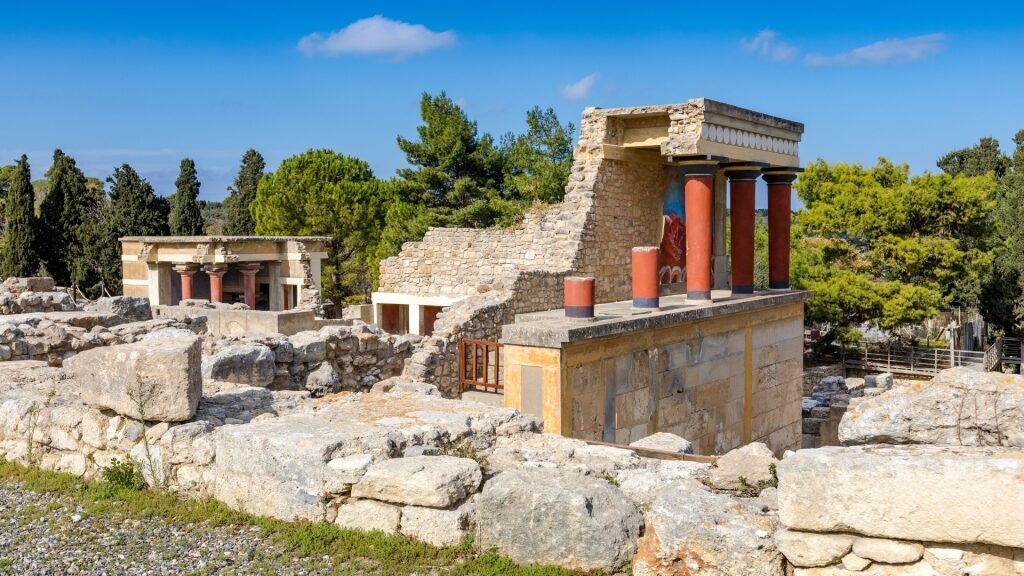
Knossos Palace
Likewise, some of the best things to do in Crete, such as visiting the Knossos Palace and Archaeological Museum and the magnificent theater of Epidaurus, are easier this time of year.
One thing to look out for is the potential for reduced opening hours, especially outside the capital. Inclement winter weather and seasonal national holidays can also lead to closures, so it pays to check before setting off.
Carnival Culture
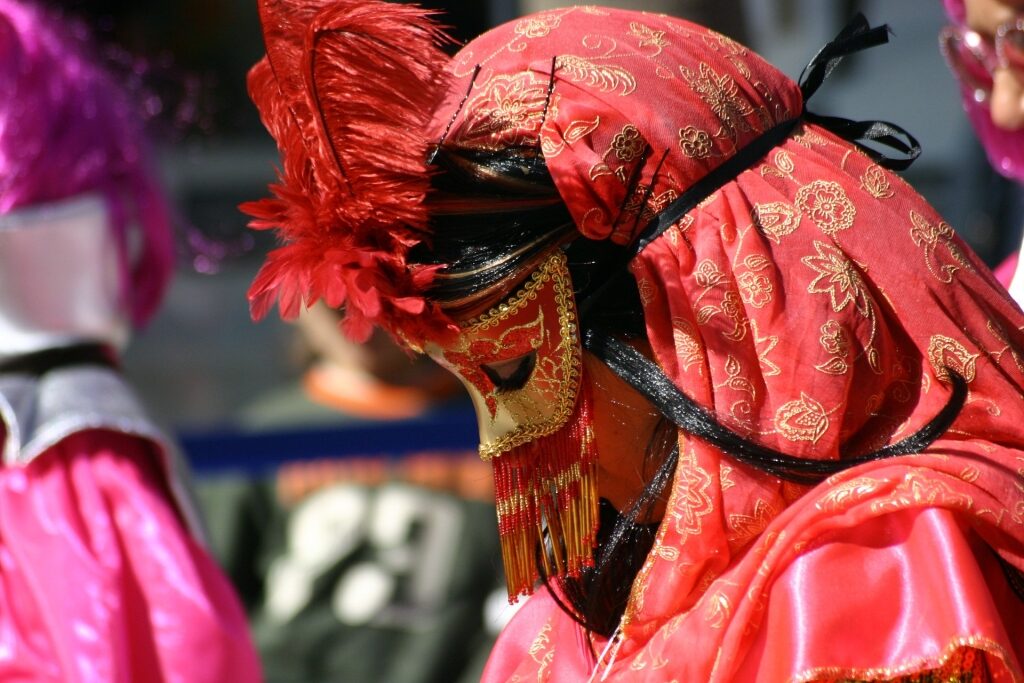
Carnival
If you’re walking down the street of a Greek city sometime in the first three months of the year and get tapped on the head with a brightly colored plastic club, fear not. You’re not under some bizarre attack, you’ve just hit Carnival season.
Known as “Apokries”, this elongated series of festive events has its roots in ancient tradition but has been assimilated into Greek Orthodox Easter celebrations as the 10-week run up to Clean Monday, the start of Greek Lent.
With Easter being a movable feast and the Orthodox calendar differing from that of other Christian denominations, the dates of Apokries can shift around but the core celebrations are almost always through February. What happens? Street parades, parties, lots of dress-up, dancing, and general tomfoolery, which is where the plastic clubs come from.
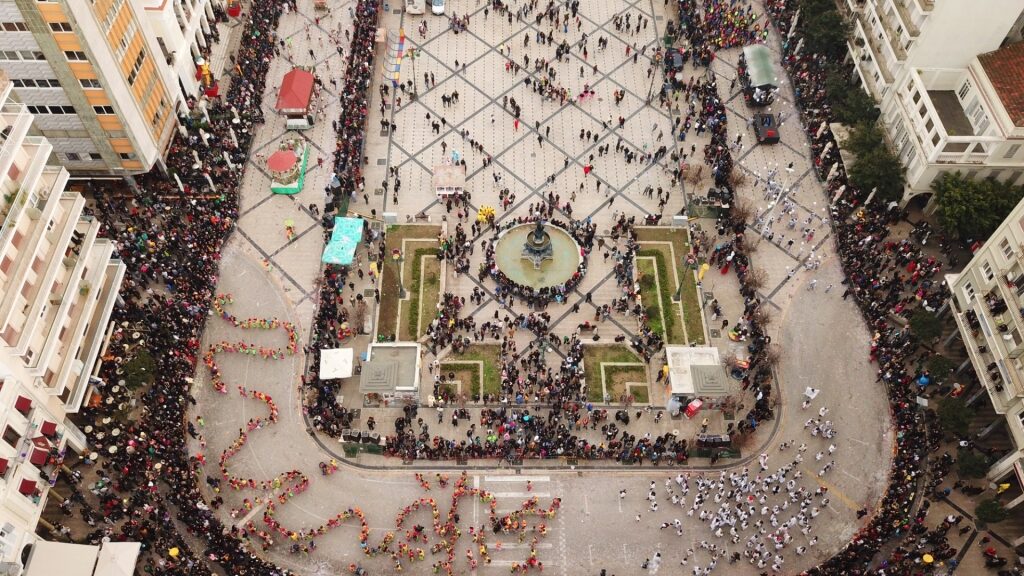
Patras
The best place to visit for Carnival Culture is the city of Patras, an hour or so north of Katakolon and the ancient site of Olympia, but Athens, Thessaloniki and Heraklion in Crete try to match its spirit. Look out too for “loukoumades”. This Greek street food version of a donut comes to the fore during the Apokries celebrations.
Vantage Point Views
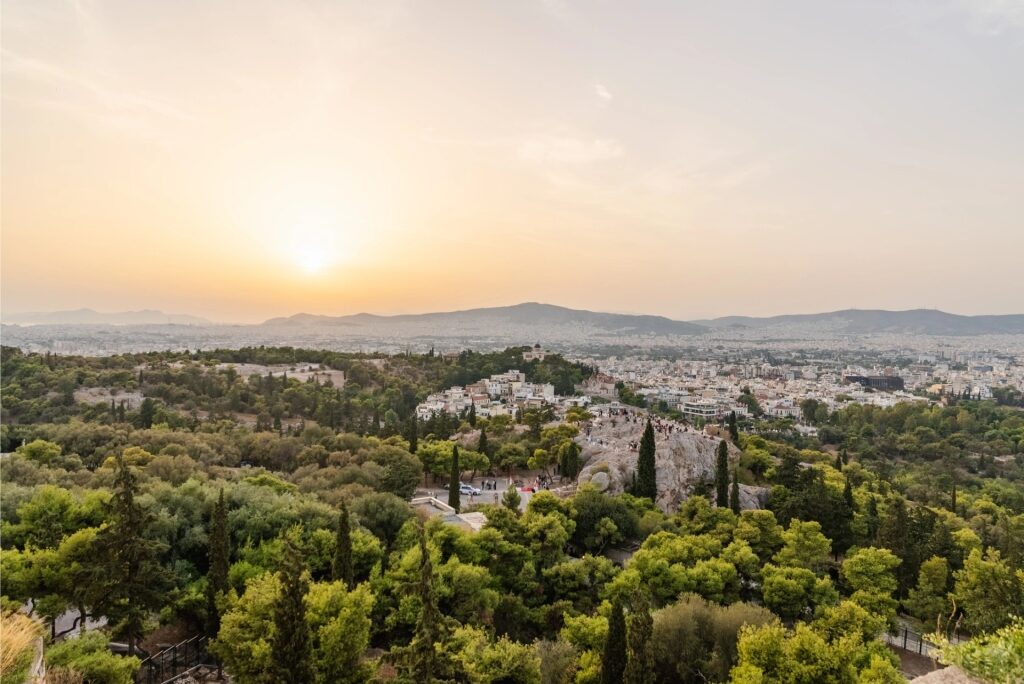
View from Acropolis
On a clear, crisp day, there can be nothing better to do than a brisk walk. When that leads to somewhere with spectacular vistas, even better.
Most major Greek cities have somewhere you can climb to so you can get a better view of the surrounding area, and the vistas are made even better without the haze of summer heat.
In Athens, you can summit 908 feet Mount Lycabettus on foot through pine-forested hills or by funicular from the downtown Kolonaki district. At the summit, there’s a small chapel and a café from which to enjoy a refreshment.
Likewise in Thessaloniki, the ramparts of the medieval Ano Poli, or Upper Town, can be reached on foot or by cab, and they offer incredible views over the Thermaic Gulf and beyond.
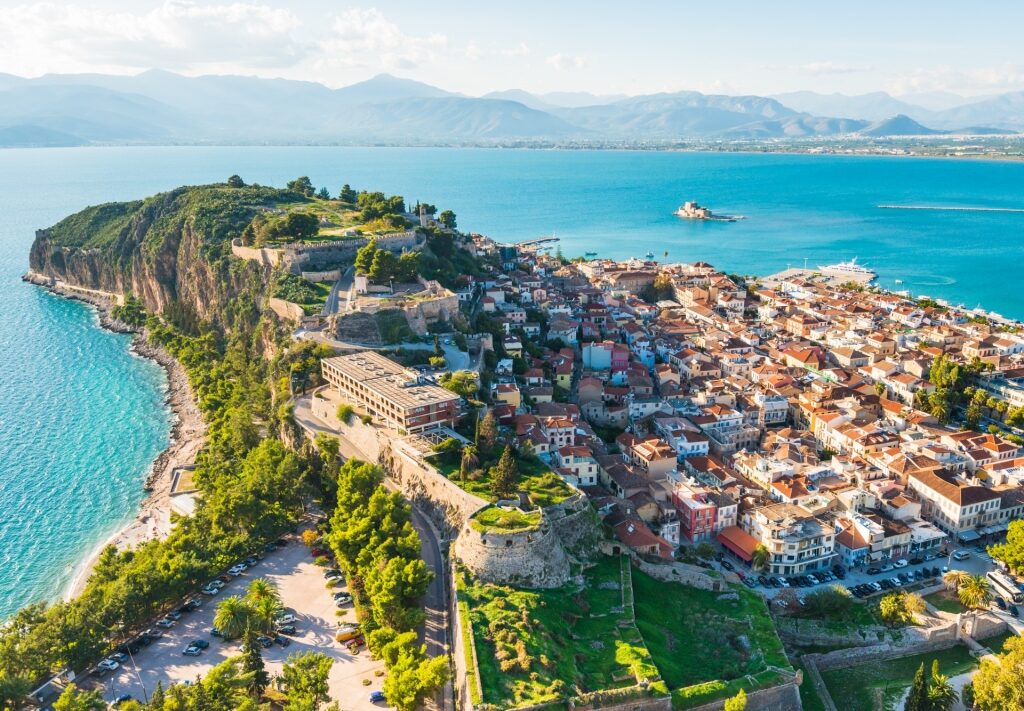
Nafplio
In Nafplio, you can drive to the 18th-century Palamidi Fortress which affords a vantage point from 708 ft over the surrounding Aegean. But it’s much more fun, and more of an achievement, to climb the 99 steps to reach it.
Cuisine to Keep Out The Cold

Moussaka
In summer, Greek cuisine is mostly about freshly grilled meat and fish, and brightly colored salads, but in winter a different cuisine takes over. It’s at this time of year that “mageirefta”, oven-cooked foods, reign supreme.
Many of the dishes stem from peasant cuisine and from when a town or village would only have one communal oven in the local bakery. When bread was finished baking, villagers could take their tray-bakes to be slow-cooked as the ovens cooled during the day, ready for the late-afternoon or evening meal.
Stews and casseroles are abundant, with harder working cuts of meat, pulses, and fresh vegetables allowed to braise away until tender. Dishes include the classic moussaka, minced lamb, aubergines, and bechamel sauce; and kokkinisto, meat or poultry in red wine and tomatoes.

Gigantes plaki
Vegetarian options include imam baldi, mixed mediterranean veg in olive oil and tomatoes, and gigantes plaki, giant bean soup.
A plate of any of these, with a slab of salty feta cheese, some freshly baked crusty “village” bread, and a glass of local wine is one of the simplest, but best, pleasures on a visit to Greece in winter.
Coffee & Café Culture
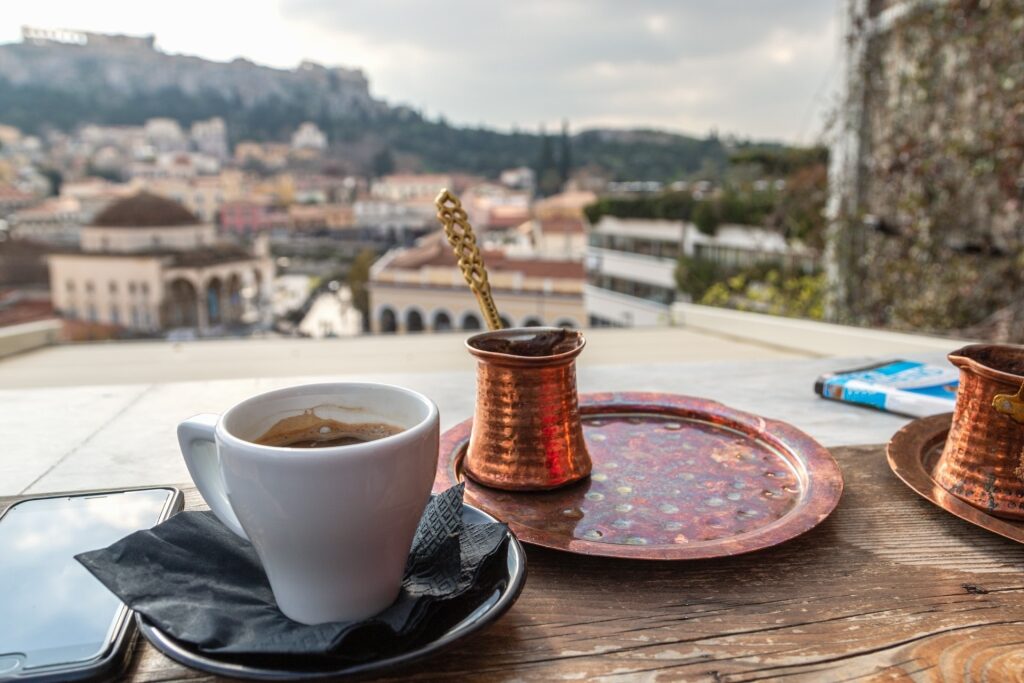
Greek coffee
The daily coffee ritual here is two-fold: mornings and evenings. Coffee is meant to be taken leisurely, over an hour or maybe more. It’s a time to relax, exchange stories, and pass on the village/town/neighborhood news.
These communal gatherings are made even more intense when people are forced indoors by the winter chill. Traditionally Greek coffee—thick, black, and brewed with the ground beans in the cup—is the order of the day.
But increasingly there is a wide array of varieties available: hot, cold, with and without frothed milk, instant, and brewed. Look out for the word “freddo” or “frappe”—both are cold coffees—but other than that, order a steaming brew and sit back and watch the world go by.
Read: Expert Tips for Planning a Trip to Greece
Romantic Towns & Villages
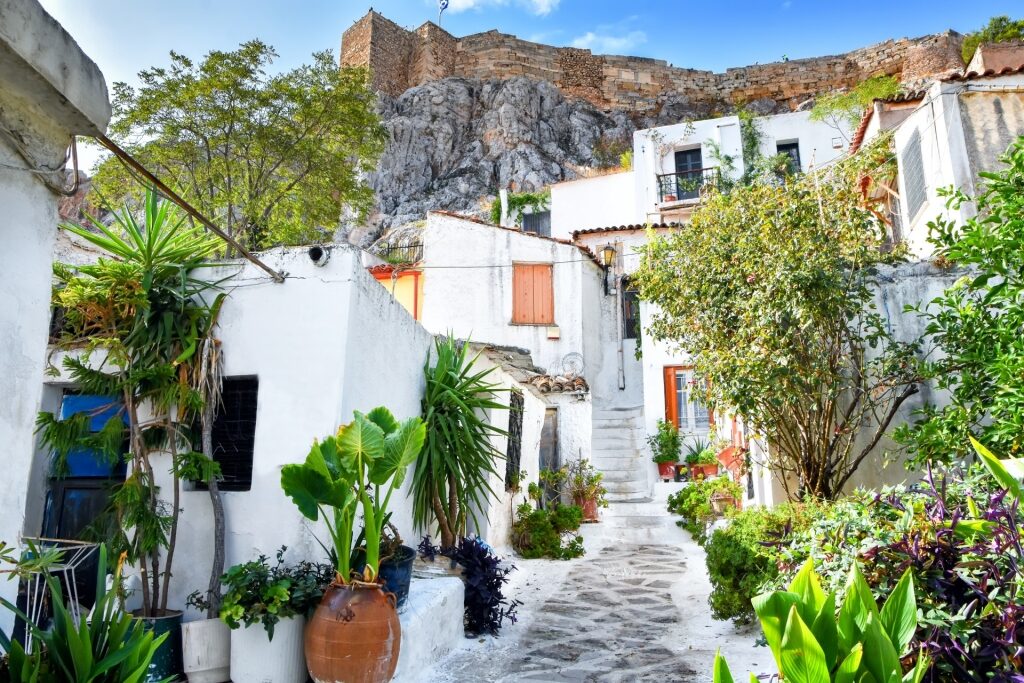
Anafiotika
It’s not only Greece’s ancient sights that are best enjoyed in colder weather. Some of the country’s gorgeously preserved old town centers are also less crowded and easier to explore at this time of year.
Winter is a perfect time for wandering around the tortuous winding alleys, gazing at medieval or 19th-century architecture, and then taking refuge in a taverna with a roaring wood fire to take off the winter chill.
Anafiotika is a small neighborhood in Athens with white-washed buildings that sits right under the Acropolis but feels more like you’re on an island.
Co-capital Thessaloniki is home to a lovely old town called Ano Poli that sits behind medieval bastions above the modern city. Here, there are rows of colorful tavernas and gift shops to enjoy as you wander around the streets.
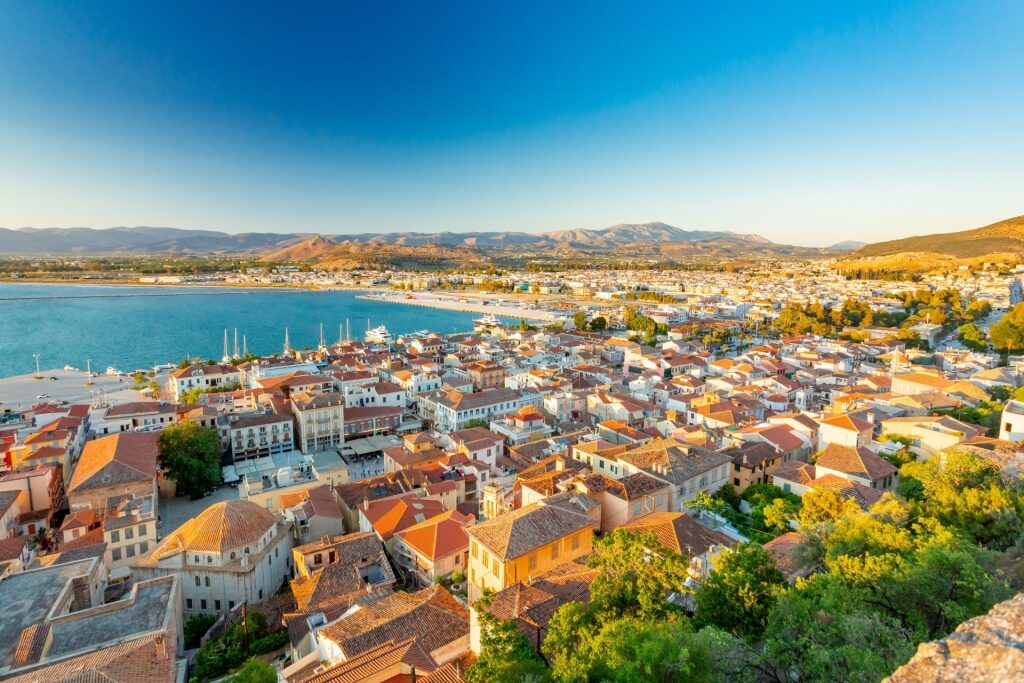
Nafplio
Nafplio on the Peloponnese has a similar feel. A former capital, its elegant 18th and 19th-century homes sit around the old port, a lovely place for a romantic walk.
Rhodes, meanwhile, is home to one of the best-preserved medieval towns in Europe. Packed with Crusader-era history, and imposing buildings, walking its streets feels more like a movie set than a town on a Greek island.
Read: Most Romantic Places in Greece
Thermal Springs & Relaxing Stops
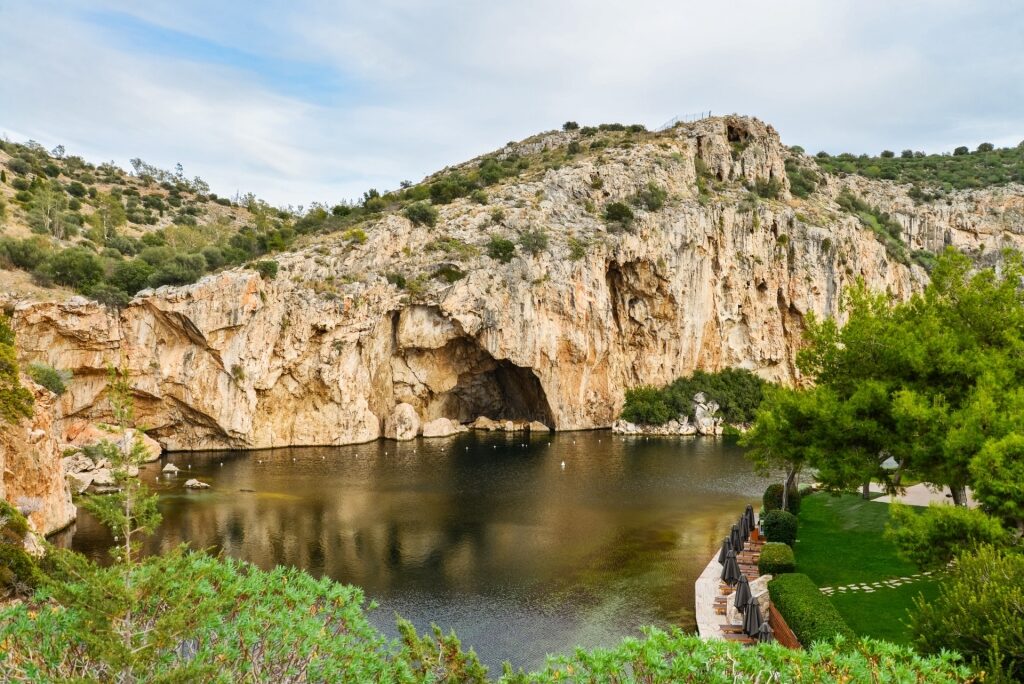
Lake Vouliagmeni
While there’s a growing trend for cold-water swimming, those visiting Greece in winter might prefer to try a natural spring, where the waters are usually warm. There’s usually also a masseuse on hand to help ease away any aches and pains.
On the coast just outside Athens, mysterious Lake Vouliagmeni is a great choice. The mineral-rich waters here are not hot per se but retain a constant temperature of around 80°F even in winter. This attracts many visitors who are lured by their claimed therapeutic qualities, especially for conditions such as arthritis and muscle pains.
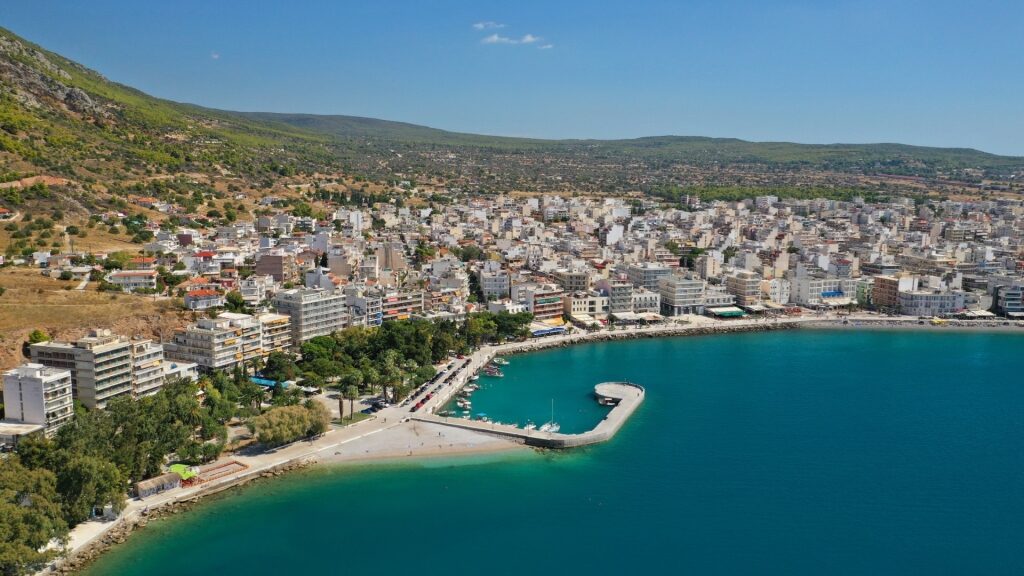
Loutraki
To the west of the Athenian Riviera and midway between Athens and Nafplion lies Loutraki, perhaps Greece’s best-known spa town, dating from ancient times. The warming waters here are complemented by more modern treatments including hydrotherapy and massages.
Across the Peloponnese from Loutraki and close to Ancient Olympia lies the town of Killini. Here, the thermal springs at the Roman Baths are a great place to soak in the local history, quite literally.
Visitors to Greece’s second capital Thessaloniki, can find the Lagada baths, a historic thermal site some 20 minutes north of the city center. Dating from the Byzantine era, there are hot and cold plunge pools, steam rooms, and relaxation areas.
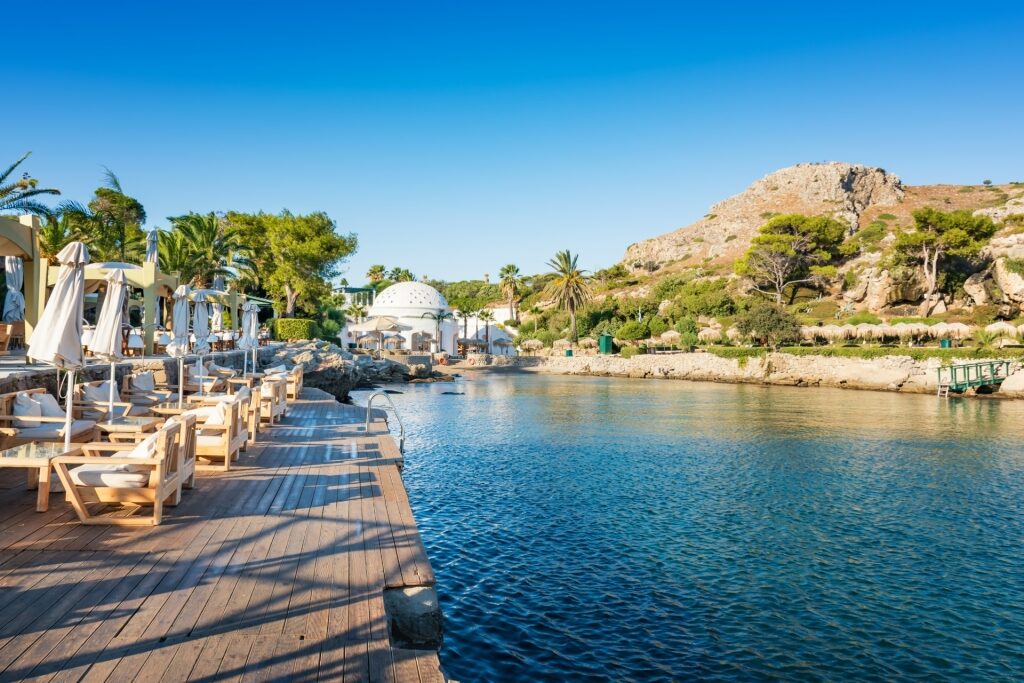
Kalithea Springs, Rhodes
The island of Rhodes has its own baths, too. Kalithea Springs were developed from an ancient site during the Italian occupation of World War II. While the springs themselves are no longer operational, the site has been renovated to offer relaxing walks, a café, and a prime beachside location with an elegant Art Deco backdrop and lush gardens.
Read: Best Beaches in Greece
Winter Shopping
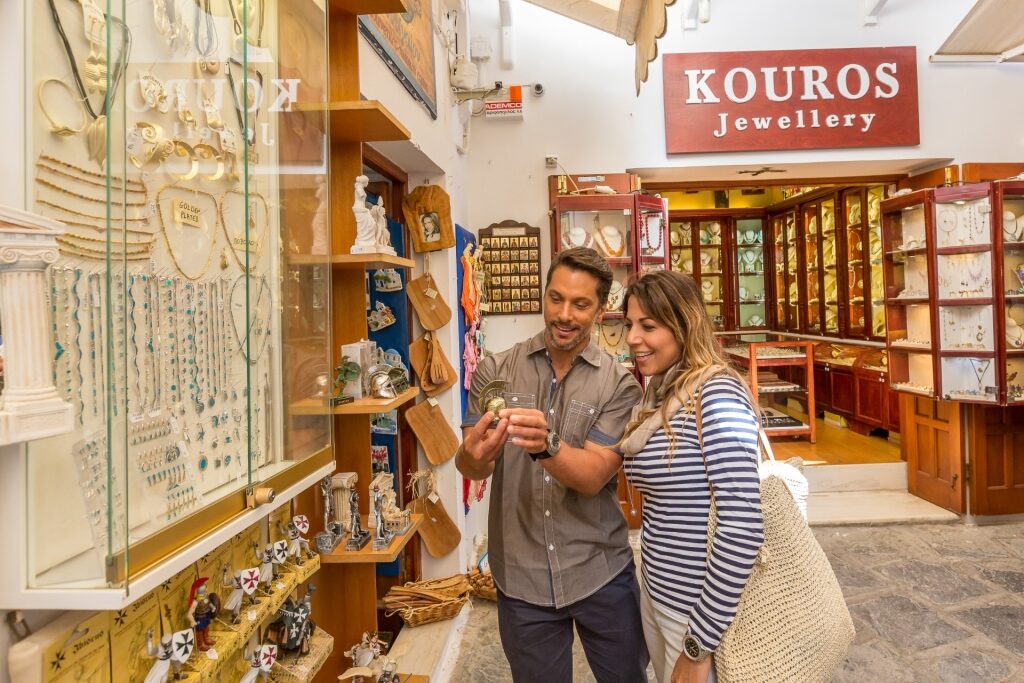
Rhodes
If you’re looking for that something special while on vacation, heading to Greece in winter may offer the perfect solution. For when the shops in the big cities here hold sales, they really hold sales.
Officially the winter sales period starts a week after New Year’s Day and doesn’t end until the last day of February. That’s almost two months of bargains to be had and, unlike sales in other countries, in Greece the discounted period is not just a way to get rid of old stock that went out of fashion a couple of years ago. The percentage discounts emblazoned on shop windows tend to be store-wide.
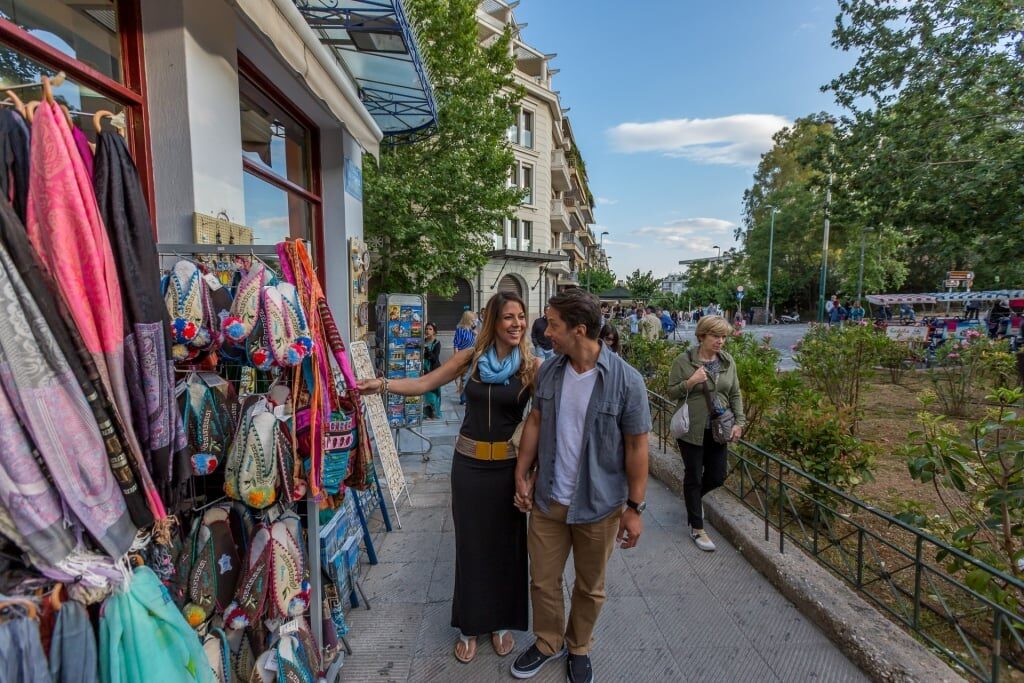
Plaka, Athens
If you’re looking for a high-end bargain, head to Ermou Street in downtown Athens, or to the Kolonaki neighborhood—both are home to big designer names at knock-down prices. Similarly in Thessaloniki, where the area around Tsimiski and Mitropoleos avenues is home to the city’s prime retail spots.
In both cities look beyond international brands, too—there are a number of great Greek designers such as Evi Grintela Karatza, Zeus + Dione, and Sophie Deloudi for those special one-off pieces that are sure to draw envious looks back home.
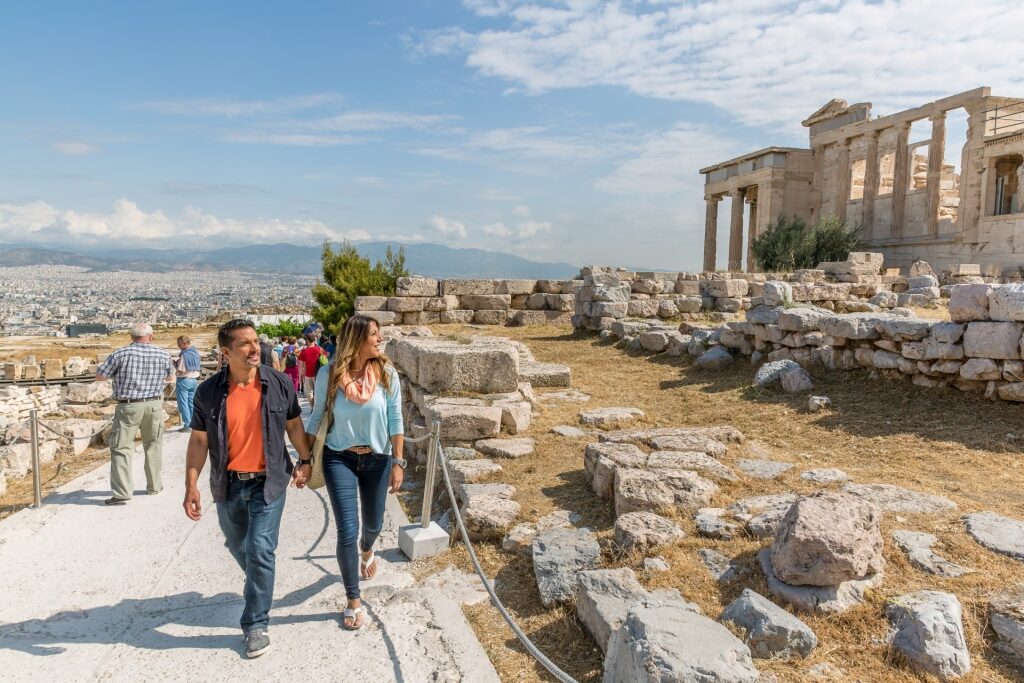
Acropolis, Athens
Looking for your next winter adventure in Greece? Check out Celebrity’s cruises to Greece and book your dream vacation.
